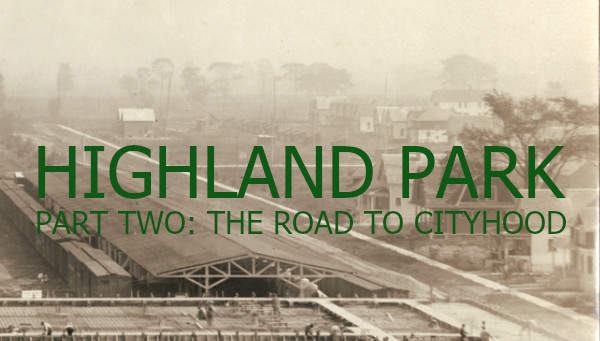
(The Henry Ford)
This is Part Three in a series covering the historical development of the City of Highland Park. Part One documents the original village's founding by silver baron Captain William H. Stevens as an exclusive community, real estate enterprise, and tax haven for the wealthy. Part Two begins with the arrival of the Ford Motor Company, which exercised powerful influence over the local government, most notably in obtaining a state-of-the-art independent waterworks, built chiefly to satisfy the factory's need for 30 million gallons of water per day. This installment begins in 1918, just after the Village of Highland Park was incorporated as a city.








